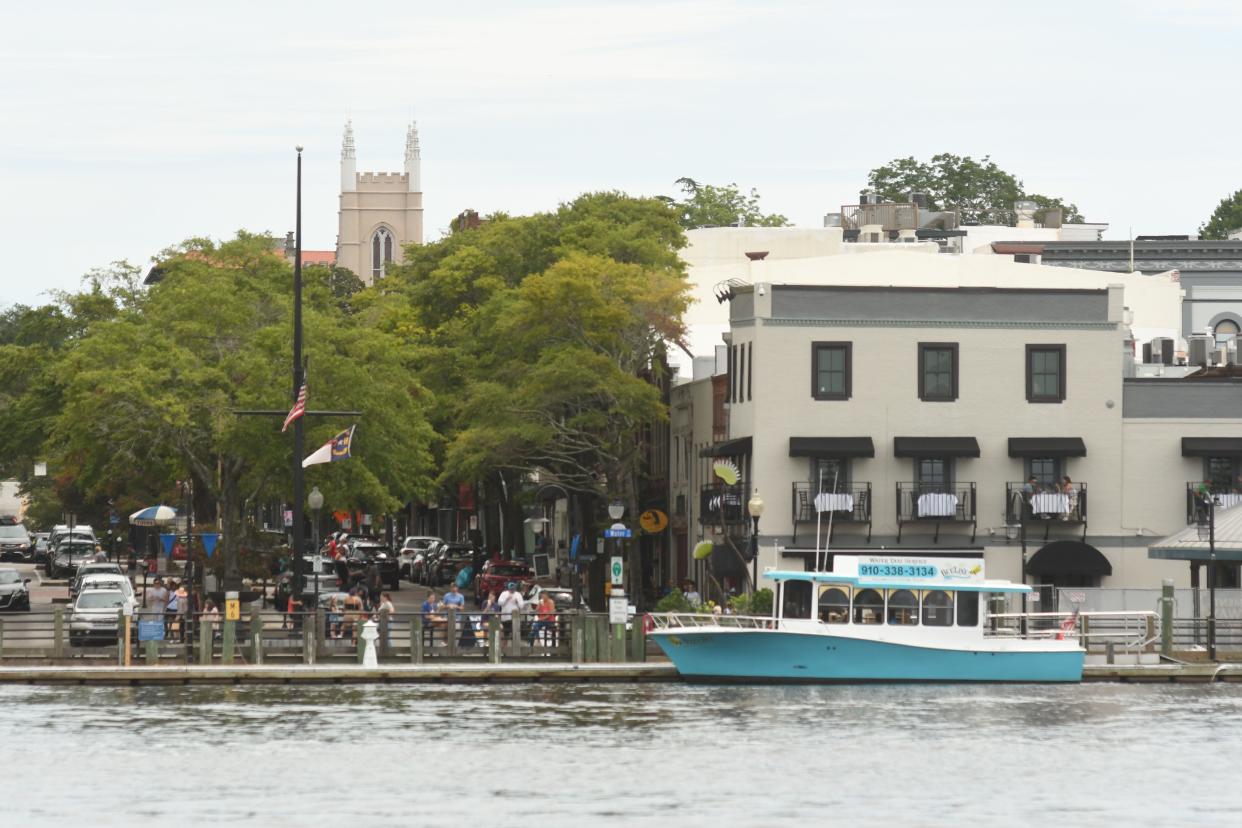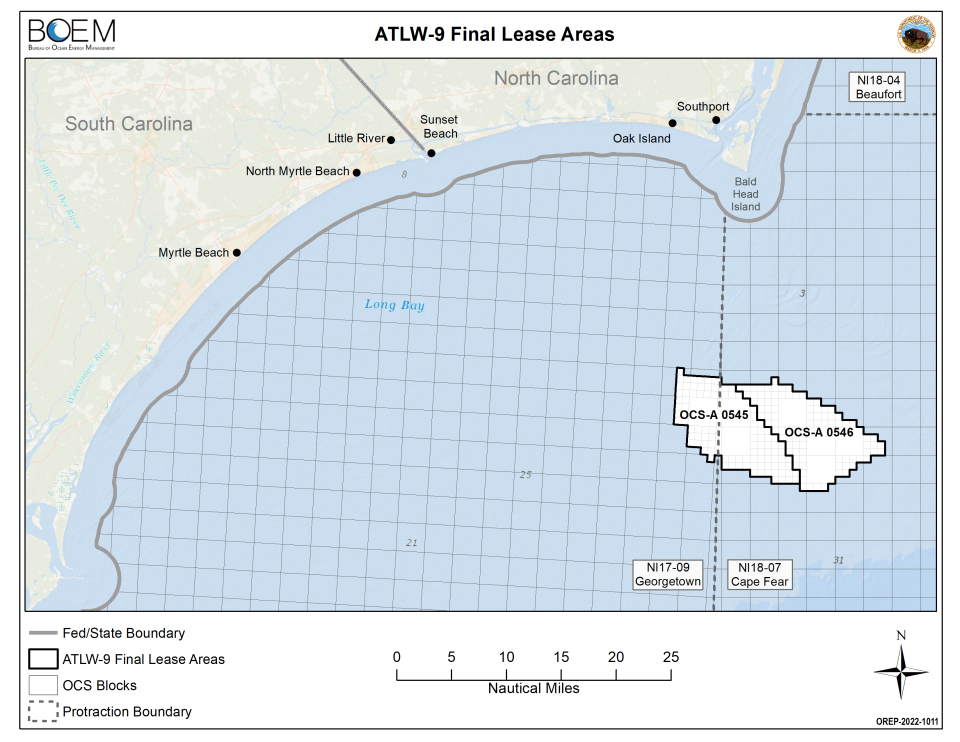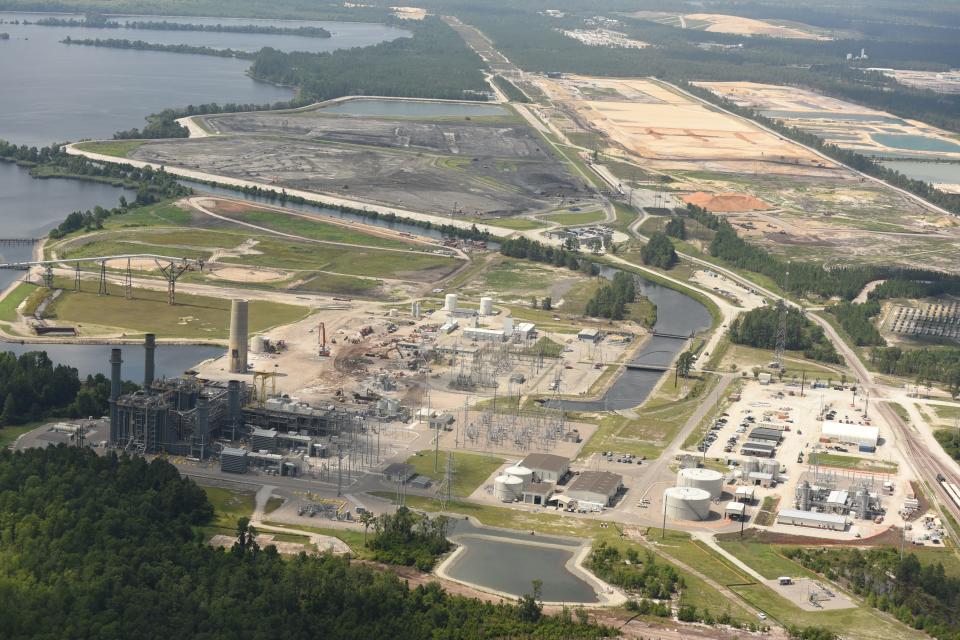How to keep the lights on in the future: Duke, environmentalists jostle over future grid

- Oops!Something went wrong.Please try again later.
When it came time for him to speak at last week's public hearing held in downtown Wilmington, Dr. Robert Parr got right to the point.
As king tides promised to flood low-lying areas of coastal Southeastern North Carolina, including areas along the Cape Fear River just a few hundred feet from the New Hanover County Courthouse, the retired Wilmington physician said there was probably no better place in the state to be holding a meeting about ways to reduce the state’s carbon emissions.
“And it’s only going to get worse in the future due to sea-level rise,” he said of the tidal flooding, which describes the highest high tides of the year and occur when the moon is closest to the Earth in orbit, as well as aligned with the Earth and Sun.
Boy shortage?: NC sea turtle nests could be producing fewer males. Here's why that's a huge problem.
What is a King Tide? We saw firsthand recently at Wilmington-area beaches.
As the planet warms and humans continue to pump more heat-trapping greenhouse gases into the atmosphere, climatologists are issuing increasingly dire warnings that the window to keep sea-level rise and future temperature increases to a manageable amount is rapidly shrinking.
“This is not fiction or exaggeration,” United Nations Sec. General Antonio Guterres said in April when the world agency’s latest climate report showed the Earth on a path to see warming reach more than double the 2.7-degrees Fahrenheit limit agreed to in Paris in 2015. “It is what science tells us will result from our current energy policies.”
That drumbeat of warnings has prompted countries, states, cities and even companies to adopt aggressive plans to reduce their carbon emissions, with North Carolina joining the list last year with the adoption of House Bill 951. Under the bill hashed out by Democratic Gov. Roy Cooper, the GOP-controlled General Assembly, and Duke Energy, the Tar Heel State committed to reduce carbon emissions by 70% from 2005 levels by 2030 and to reach carbon neutrality by 2050.
Duke, as the state's largest utility, is in the process of working on a plan, with oversight by the N.C. Utilities Commission, to meet that goal. The utility giant has submitted several "pathways" to meet the requirement.
Climte : How the pawpaw, also known as a hillbilly mango, could be a climate change winner in NC
But while everyone supports building a de-carbonized power infrastructure, the best way to make that sausage is generating different ideas and views.
For Duke officials, the goal is to navigate keeping the lights on and meeting the statutory reduction requirements while keeping costs under control and stockholders happy.
For state regulators, it’s how to promote the transformation to a green energy grid in a fair and equitable way without hitting consumers with a massive bill increase.

And for environmentalists and some concerned citizens, the clock is ticking closer and closer to midnight. They note that three of Duke’s four pathways include measures that allow it to meet the 70% reduction after 2030 and are worried about emissions from new natural gas plants.
"We can't afford any more delays," Parr said.
Duke officials said the flexibility built into the state law allows for the further adoption of more advanced, carbon-free power generation options, with less risk and potentially lower costs.
Keeping the lights on
According to the U.S. Energy Information Administration, North Carolina’s current energy mix based on 2021 data is 31% nuclear energy, 33% natural gas, 21% coal, and 15% renewables.
Retiring all of Duke's remaining coal-fired power plants — the biggest polluters in its inventory — is included in all of Duke's proposed plans. But there are differences of opinion on what the old fossil fuel plants should be replaced with and how quickly.
Turning wind into power off the Wilmington coast could be a decade away
Many environmentalists would like to see Duke move right from coal to renewables, skipping the use of more natural gas-powered plants. While natural gas is a much cleaner burning fossil fuel, it still emits greenhouse gases, notable methane. When burned, methane emits less carbon dioxide than fossil fuels such as coal. But when methane leaks directly into the atmosphere, its warming effect can be substantially more potent than carbon dioxide.
But Duke officials have said just switching to renewables and emerging power technologies, such as small modular nuclear reactors and hydrogen power, while keeping the lights on — and utility bills affordable for consumers — isn't a risk-free endeavor. Not only are there cost concerns, but worries about how to provide an adequate power supply when the sun isn't shining or the wind isn't blowing.

"How do we manage the ongoing energy transition in a manner that's affordable for our customers while maintaining strong, 24/7 reliability?" said Glen Snider, Duke’s managing director of resource planning and analytics, in an interview before the public hearing in Wilmington.
He said that's why Duke still sees a continued role for natural gas even as it aggressively moves to add more renewables, such as offshore and onshore wind turbines and solar, to its power-production portfolio.
Fatal fumes: NC's dirty secret: Vehicles account for more greenhouse gas emissions than power plants
"It's part of the all-the-above strategy," Snider said.
But Parr, who also is a former oceanographer, said the threat we're facing from climate change is like a "four-alarm fire" and requires swift and decisive solutions, not incremental steps.
"Replacing coal with natural gas is decades and decades behind a problem we already have," he said.

Maggie Shober, research director at the Southern Alliance for Clean Energy, echoed the sentiment.
"New gas infrastructure is simply not needed, and is too risky an investment right now," she said via email. "Adding gas to the system, which already has a lot of existing gas, locks in reliance on a fossil fuel with a very volatile price market."
Decision by 2023
While a small audience compared to the public meeting the day before in Durham, the Wilmington hearing on Duke's proposals drew several dozen people to the county courthouse, with about 10 making comments.
Some, like local conservationist Andy Wood, said Duke should craft its plans to creating the most efficient energy production network and not toward meeting stockholder needs. Others spoke in broad terms about the need to keep utility bills under control even as we move to a "greener" grid.
Future hearings are scheduled for July 27 in Asheville, July 28 in Charlotte and a pair of virtual hearings on Aug. 23.
The Southern Environmental Law Center also plans to submit an alternative carbon-reduction plan this week on behalf of several environmental groups.
The utilities commission is scheduled to decide on a plan by the end of the year.
Reporter Gareth McGrath can be reached at GMcGrath@Gannett.com or @GarethMcGrathSN on Twitter. This story was produced with financial support from 1Earth Fund and the Prentice Foundation. The USA TODAY Network maintains full editorial control of the work.
This article originally appeared on Wilmington StarNews: Duke Energy, environmentalists tussle over NC carbon-reduction plan

